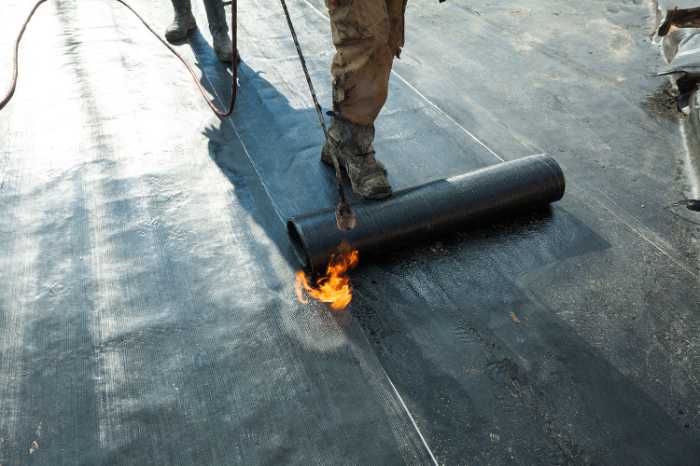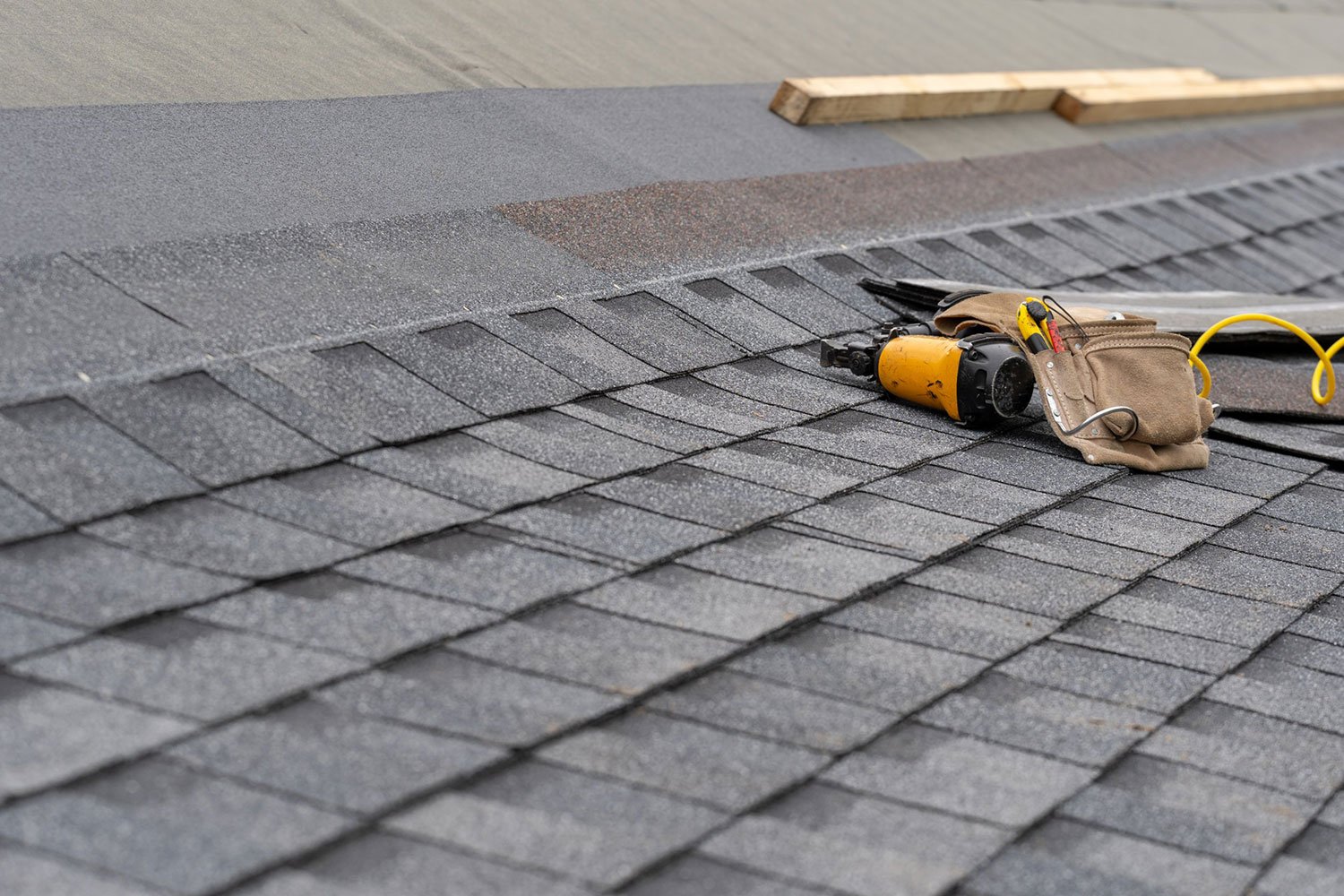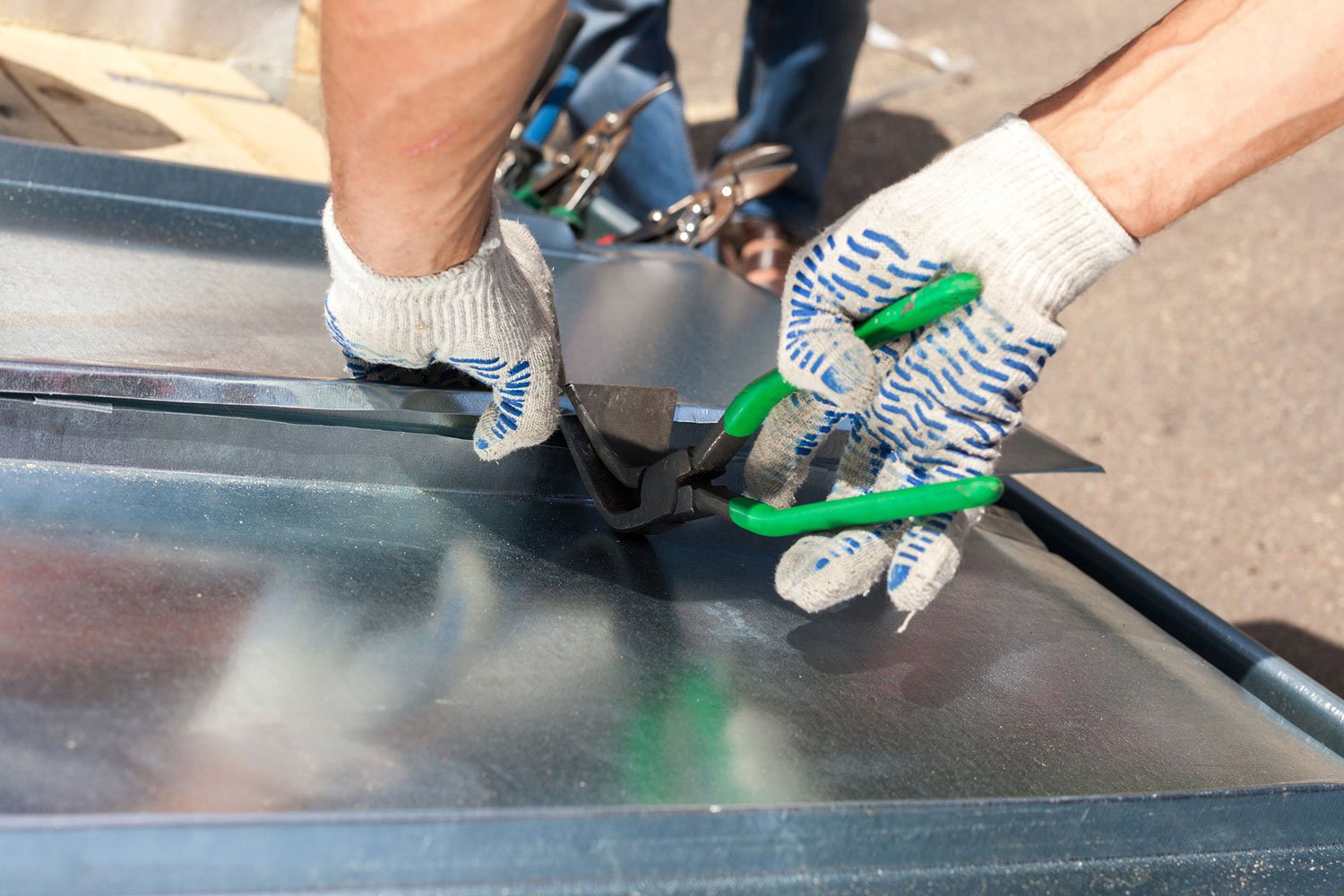If you’re a homeowner or building manager, chances are that you spend a lot of time thinking about flat roofs or different roof types. There are many kinds of highly resistant top layer PVC roofs. These are the most common types of roofs and can be found on everything from single-family homes to large commercial buildings. There are also different kinds of flat roofing options available for your perusal.
They can last for decades and do not require much maintenance, but they should still be inspected regularly. If they start to show signs of wear and tear, however, it may be time to consider total roof replacement.
The roofing industry has made great strides in developing more durable and longer-lasting roofing materials, so if your roof is starting to show its age, there are plenty of options available.
Flat Roofing Repair and Replacement Options:
Patching and Sealing
This is the simplest and most common repair option. It involves cleaning the roof and applying a sealant to any cracks or holes.
However, this is a temporary measure and will not prevent future leaks. You may even use recycled materials to get this done. Make sure to get rid of standing water, and note any kind of water leakage. Watch out for roof leaks too.

Resurfacing
It works especially well with modified bitumen roofing. This option involves applying a new layer of roofing material over the existing one. This can extend the life of the roof by several years, but it is not a permanent solution.
Replacing
This is the most expensive option, but it is also the most effective. The entire roof will be replaced with new materials, ensuring that it will last for many years to come. So, most of the time, you will need a roofing contractor to replace it with a new roof or revamp the entire structure.
Best Flat Roof Materials
Modified bitumen roofs: This type of flat roofing is made up of multiple layers of asphalt that is reinforced with fiberglass or polyester. It provides added protection when installed properly.
It is then covered with a layer of gravel, which helps protect it from the sun and weather. A modified bitumen roof is very solid, especially when taking note of it per square foot.
Rubber Roofing
This roofing material or roof structure is made from recycled tires and other materials. It is extremely durable and can last for many years. However, it is also one of the more expensive options. Some are processed from hot tar to make synthetic rubber roofing materials. Sometimes, those who use a commercial roof prefer using this to modified bitumen roofs.
Metal Roofing
Metal roofs are usually made from aluminum or steel. They are very strong and can last for decades with proper maintenance. They are also energy
Flat Roof Materials
The most common type of flat roof material is made of asphalt. This material is durable and can last for up to 20 years with proper maintenance. Other popular materials include rubber, PVC, and metal. These materials are more expensive than asphalt but can also last longer, sometimes up to 50 years. Metal roofs on flat roof structures is usually more common on commercial buildings. bitumen roofs.
When choosing a flat roof replacement, you will also need to decide on the type of material you want. Asphalt is the most common and least expensive option, but it does not last as long as some of the other materials. Rubber, PVC, and metal are all more expensive but can last up to 50 years with proper maintenance.
Flat Roof Material Options
- Asphalt
- Rubber
- PVC
- Metal
Built-Up Roofs
One of the most common types of flat roofs is the built-up roof. This roof is made up of multiple layers of asphalt or other materials, which are then covered with a layer of gravel or stone. This type of roof is very durable and can last for decades, but it is also one of the heaviest, so it is important to make sure that your building can support the weight.
- Multiple layers of asphalt
- Covered with a layer of gravel or stone
- Very durable
- Can last for decades
- Heaviest type of flat roof

EPDM Roofs
EPDM roofs are made from a synthetic rubber material, which is then vulcanized to make it stronger. This type of roof is very lightweight and can be installed quickly, but it is not as durable as some of the other options.
- Made from a synthetic rubber material
- Vulcanized to make it stronger
- Lightweight flat roof material options
- Can be installed quickly without being heat welded, and it does a good job to reflect heat.
Single-Ply Roofing
Single-ply roofing is a single layer of asphalt or rubber. It's the least expensive option and performs well in areas that don't see much snow or ice, but it's not as durable as other types of roofing.
Single-ply roofs are also not as fire-resistant, which means they're susceptible to catching on fire during a lightning storm.
Single-ply roofing isn't recommended for homeowners who live in climates with lots of snowfall and/or have frequent windy days.
If you're planning on replacing your flat roof with this type of material, remember that it will need to be replaced more frequently than other options because it doesn't last as long. It doesn't endure temperature extremes, nor is it good at reflecting heat.
Asphalt Roll Roofing
Asphalt roll roofing is the most common type of flat roofing installed on residential and commercial buildings.
Asphalt roll roofs are formed by applying multiple layers of bitumen-based and aggregate materials to a batten, or lightweight metal frame. This can be done as a single-ply roof or built up in several layers.

Rolled Asphalt Shingles
Rolled asphalt shingles come in three main configurations: single-ply, two-ply (double), and three-ply (triple). Single-ply is just that—a single layer of material laid down with no additional support underneath it. Double is a two-layer product with an air space between them; triple is also two layers but with an air space between each layer.
The amount of protection these types provide depends on the amount of insulation used underneath them; for example, double shingle insulation rating must be at least 7 inches to meet minimum code requirements for residential roofs while triple shingle insulation does not require such thick insulation under it because it has more surface area for heat transfer resistance due to its increased number of plies.
Built-Up Roofing
If you have a flat roof and need to replace it, a built-up roofing system might be your first choice. A built-up roof is a type of roofing material or roofing structure that is composed of a variety of layers of materials, including asphalt, fiberglass, and mineral granules. Built-up roofs are typically made with two or more layers of materials bonded together by heat and pressure.
Built-up roofs are often preferred because they are easy to install and maintain; however, because they do not provide drainage for excess water like standing seam roofs do (see below), built-up roofs can be susceptible to leaks or damage depending on the weather conditions where your home is located.
Metal Roofing
Metal roofing is a popular option for flat roofs because it's durable, low maintenance, and long-lasting. Metal roofs come in many colors and finishes to match your home's style while providing an energy-efficient surface that is fire resistant.
Thermo-Plastic Roofs
Thermoplastic roofing is a single-ply roofing material that's lightweight, easy to install, and can be used on flat roofs. Thermoplastic sheets are typically made from a combination of high-density polyethylene and polyurethane, which means they're resistant to corrosion, moisture damage, and UV radiation. Because they're so easy to install, thermoplastic sheets are also a great choice if you're looking for an affordable way to refresh your existing roof without having to tear it off entirely.

Flat roofs require special consideration.
Flat roofs are not ideal for heavy snowfall. The weight of the snow can cause flat roof damage, which can lead to leaks and other problems.
If you have a flat roof, it is important you consider how often you experience heavy snowfall in your area before buying a home with this type of roofing. If you live in an area that receives large amounts of snow each year and the property has no shelter from high winds or other elements, then replacing the old flat roof may be necessary so that your new home is protected from these harsh weather conditions.
If heavy rain is common where you live, then replacing an existing flat roof will help prevent leaks caused by flooding in areas such as bathrooms and basements.
How to Fix a Flat Roof
The first step in fixing a flat roof is to identify the source of the problem. Common problems include leaks, ponding water, and debris buildup. Once the problem has been identified, it is important to take immediate action to repair the roof and prevent further damage.
One of the best ways to fix a flat roof is to install a new layer of roofing material over the existing one. This will provide a fresh, new surface that is less likely to leak than an old, damaged one. If you are not sure how to install a new layer of roofing material, you can hire a professional to do it for you. Find Local Roof Pros Spray-Applied Coatings Spray-applied coatings help seal and protect flat roofs from water damage. Because the coating is sprayed on, there are no seams to worry about, and it will cover the seams in EPDM roofs for added longevity. While spray-applied coatings are fairly tedious to apply correctly to the roof, they are worth the time and investment because they lengthen the lifespan of your flat roof.
The most important thing you can do before choosing a roofing material is to have a professional roofer evaluate your roof. If that's something you're looking for, contact us!


COMMENTS